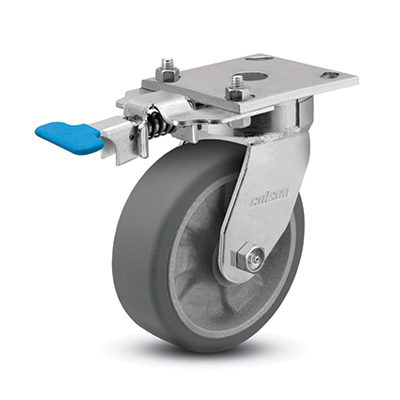Locking casters, also known as locking wheels or swivel casters with brakes, are commonly made from various materials to suit different applications and environments. The choice of material depends on factors such as load capacity, floor type, and durability. Here are some common materials used for locking casters:
- Rubber: Rubber casters are ideal for indoor use on hard, smooth surfaces. They provide good traction and are non-marking, making them suitable for protecting delicate flooring. Rubber casters often come with a brake mechanism to lock the wheel in place.
- Polyurethane: Polyurethane casters are known for their durability and resistance to abrasion. They work well on both indoor and outdoor surfaces and are often used for heavy-duty applications. Polyurethane wheels can also be equipped with locks.
- Nylon: Nylon casters are lightweight and durable. They work well on smooth surfaces and can carry heavy loads. They are less likely to damage floors. Nylon locking casters are often used in industrial settings.
- Steel: Steel casters are incredibly strong and suitable for heavy-duty applications. These casters are often used in industrial and manufacturing environments. The wheel locking mechanism is usually robust to ensure the caster stays in place when locked.
- Hard Rubber: Hard rubber casters are similar to soft rubber casters but with a harder durometer rating. This makes them suitable for rough or uneven surfaces. They provide good shock absorption.
- Thermoplastic: Thermoplastic casters are lightweight and offer corrosion resistance. They can be used in various environments, including wet or chemical-prone areas.
- PVC: PVC casters are cost-effective and suitable for light to medium-duty applications. They can be used on smooth surfaces but may not offer the same level of durability as some other materials.
The locking mechanism for casters can vary, but it typically involves a brake or locking mechanism that engages when you press a lever or pedal, preventing the caster wheel from rolling. The choice of material and locking mechanism should be based on the specific requirements of your application, including load capacity, floor type, and environmental conditions.


